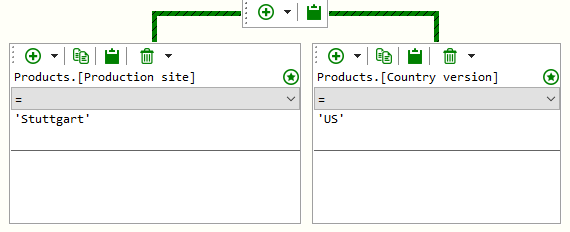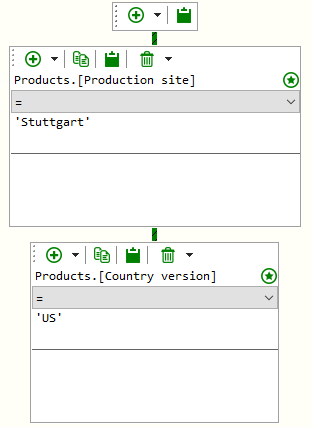






The rule editor is used in several structural elements.
A rule is a logical expression composed of individual components in a tree structure. The starting point of the rule is the rule root element.

Rule root element
If a rule has only the rule root element, the resulting expression of the rule is True.
Now additional components can be added to the rule:
|
Rule component |
Description |
|
List |
A list that is provided with a control variable (influencing factors) and has a control operator. Individual values or expressions are added to the list that are assembled into a subexpression of the rule using the common control operator. |
|
Expression |
A subexpression that can be freely defined, for example, to store the equality of two characteristics. |
|
Exclusive Or |
A subexpression that must have additional components that are evaluated exclusively OR (Xor). For Xor, the left element can be True or the right element, but not both. |
|
Negation |
A subexpression that negates subsequent elements. |
|
Touch |
An expression that is already filled with the appropriate touch expression. Touch checks that a characteristic or object has a set touch attribute, i.e. has been modified by the user in a form. |
|
Not Touch |
An expression that is already filled with the appropriate NotTouch expression. Touch checks that a feature or object has a set touch attribute, i.e. has been modified by the user in a form. |
Arrangement of the rule components
OR

Starting from the rule root element are two branches that lead to the last element. The rule is true if all rule components in a branch are logically True.
The resulting expression is
(Products.[Production site] = 'Stuttgart') Or (Products.[Country version] = 'US')
AND

Starting from the rule root element there is one branch that lead to the last element. The rule is true if all rule components in a branch are logically True.
The resulting expression is
((Products.[Production site] = 'Stuttgart') And (Products.[Country version] = 'US'))